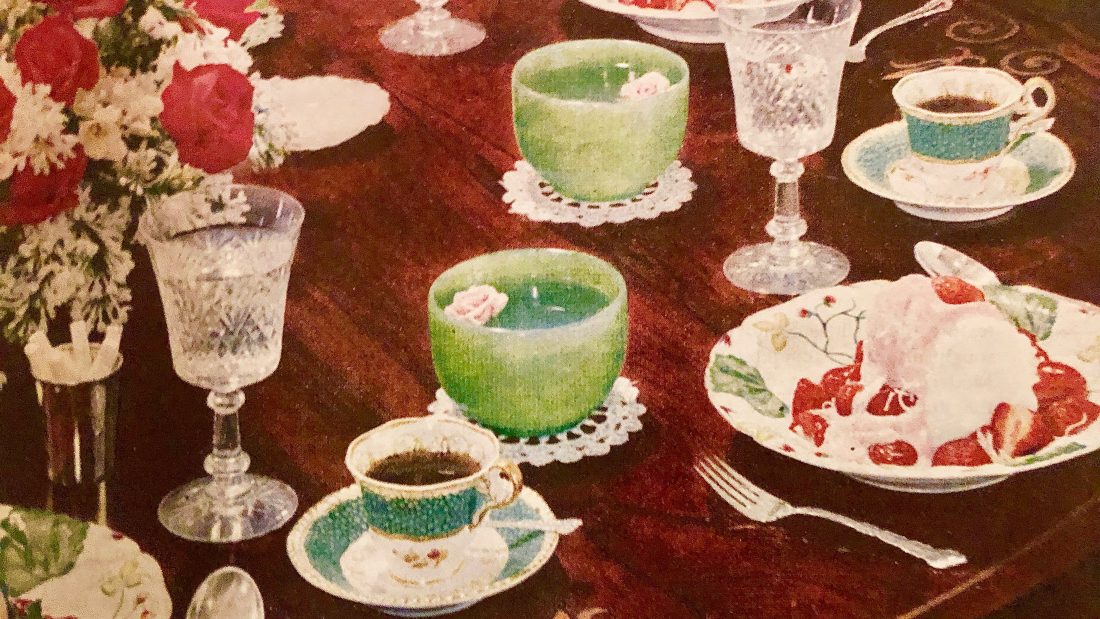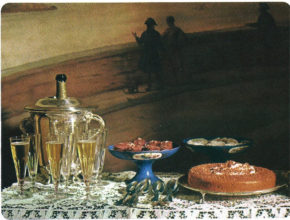“The finger-bowls are usually brought in on the dessert plates which also hold the dessert spoons and forks. Each person sets his finger-bowl and the doily underneath it on the table in front of or at the side of his dessert plate, to be used later. The dessert spoon and fork are generally placed on the table by the guest, one on each side of the plate, before the dessert is handed, but sometimes they are left on the plate. At the conclusion of the meal, dip the fingers of the first one hand and then those of the other into the finger-bowl (which is about half-filled with not very cold water) and then dry them with the napkin. If the finger-bowls are brought in on the fruit plates with the fruit knives and forks, remove bowls and doilies at once.”
Etiquette for All Occasions, Homemaker’ Department NY American (1930)

Some say the finger bowl was introduced to lightly clean fingers that might have become soiled by the meal. Others assert that it is a throwback to medieval times when bowls of water and servants holding towels would wash the hands of guests before a banquet. As you will read later on, by the 13th century, silver finger bowls were used in fine homes. In the victorian era, the finger bowl became a codified part of the formal meal. This continued well into the 20th century.
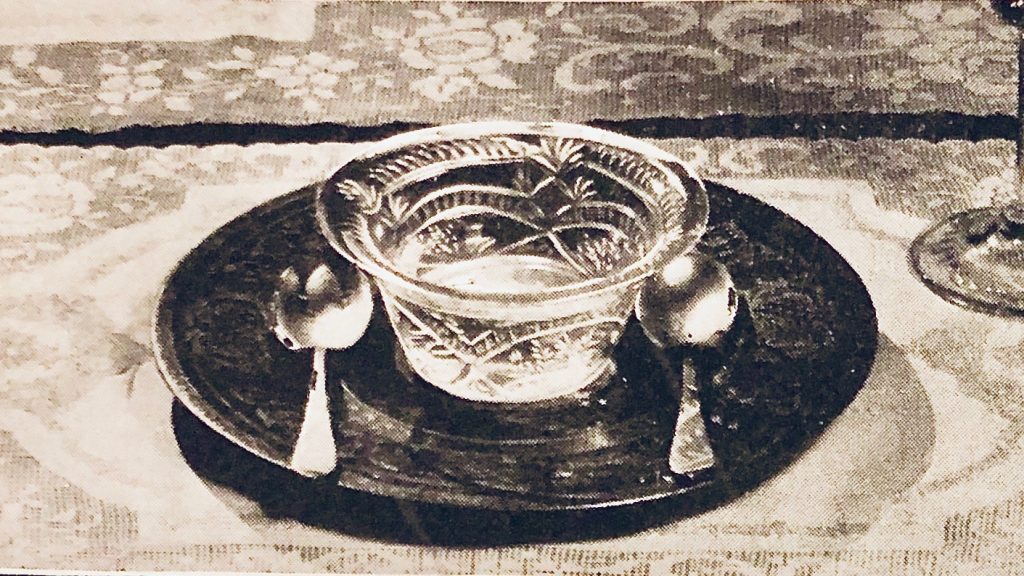
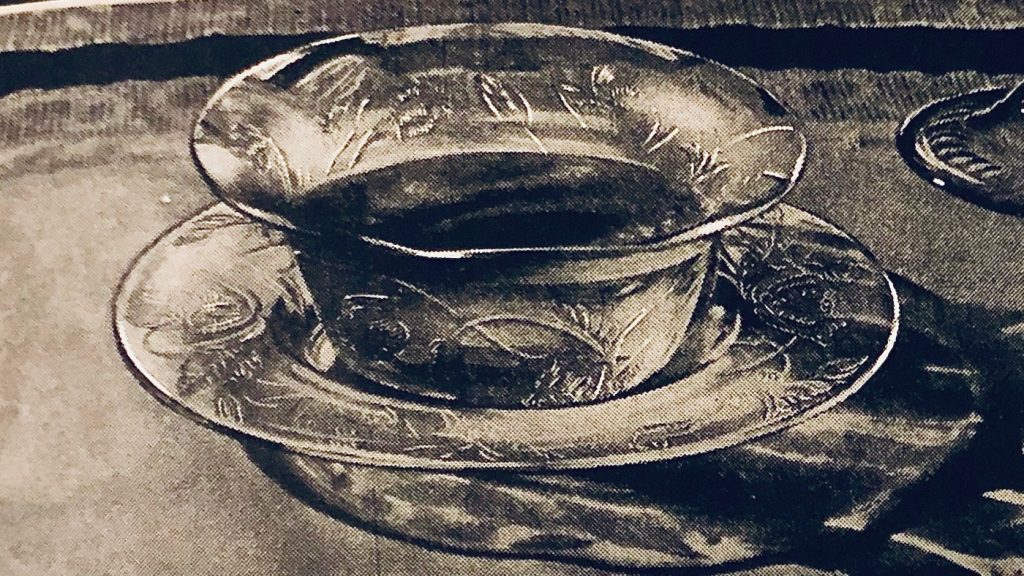

After the first world war, fashions in dining turned to a simpler and more “modern” form of entertaining. Your young Sheiks and Sheebas weren’t interested in the stuffy Edwardian dining of their parents. They wanted dancing and cocktails and the life of the wild set. They weren’t about to sit through ten courses and then retire to the drawing room. Finger bowls started to disappear except for formal dinners or very special occasions.
“Finger bowls are rarely seen in understaffed or unstaffed households these days, but of course still do make their appearance in homes where perfect service is still possible, (It is interesting that as early as the thirteenth century silver finger bowls were presented with flowered linen towels.). they are filled tree-quarters full with cold water and placed on the table in either of two ways, one of which requires the slight co-operation of the guest. If the finger bowl on the dessert plate and, if one is used, decorative doily (never paper) is placed before a guest with dessert silver on each side, the guest is expected to lift bowl and doily and small glass plate, if any, adroitly with the right hand and place it in front and slightly to the left of his place setting. He then removes the silver and places it, fork left and spoon right of the plate. If the finger bowl is presented with no silver flanking it, this indicates that there is no further course and the guest does not remove it from the plate. Very occasionally, a small underplate on the dessert plate topped by doily and finger bowl, is intended for use. For example, strawberries Romanoff is a difficult dessert for a flat plate, the menu or the hostess gives the cue.”
Amy Vanderbilt’s Complete Book of Etiquette, 1957
Restaurants saw a rise in the use of finger bowls in the late fifties, they would be brought to the table at the end of the meal. It was a way of telling the world that this was an “elite” establishment. Sadly, this ubiquitous use of the bowls is what finally killed them. Suddenly, finger bowls weren’t elite, they were common. Nothing reduces desirability more.
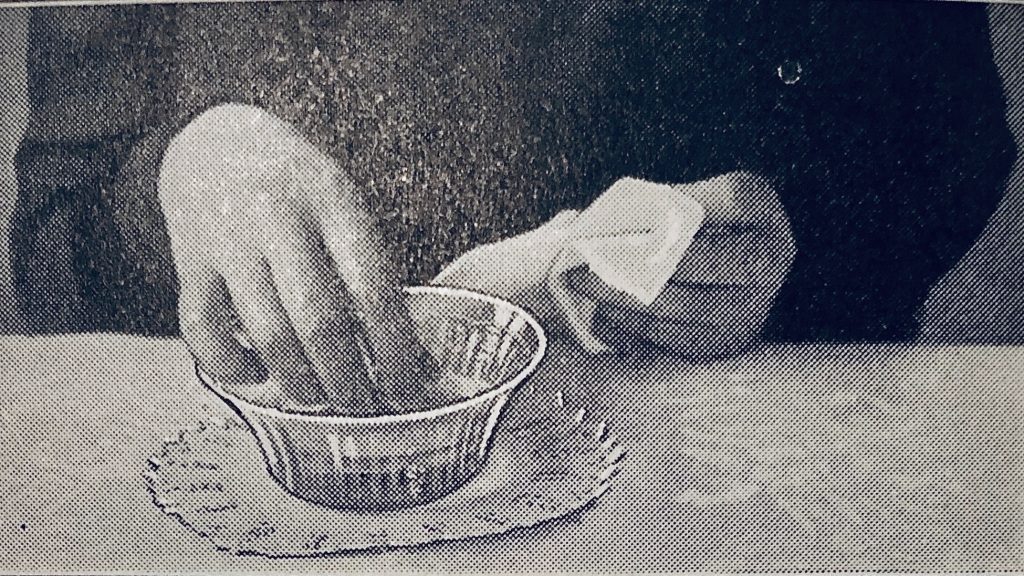
Now-a-days, you rarely see a finger bowl. I can’t say there is any reason to bring them back, but I must admit that I like using these. There is something wonderful in the tiny, useless civilizing touches we add to our lives. My grandmother would have called them “jewelry for the table”. You don’t really need them, but their beauty makes them desirable non the less.
Little detail: There are etiquette books that mention dipping a corner of your napkin in the water to dab on the lips, but it is highly unlikely that anyone ever did this and gained the ire of their hostess.
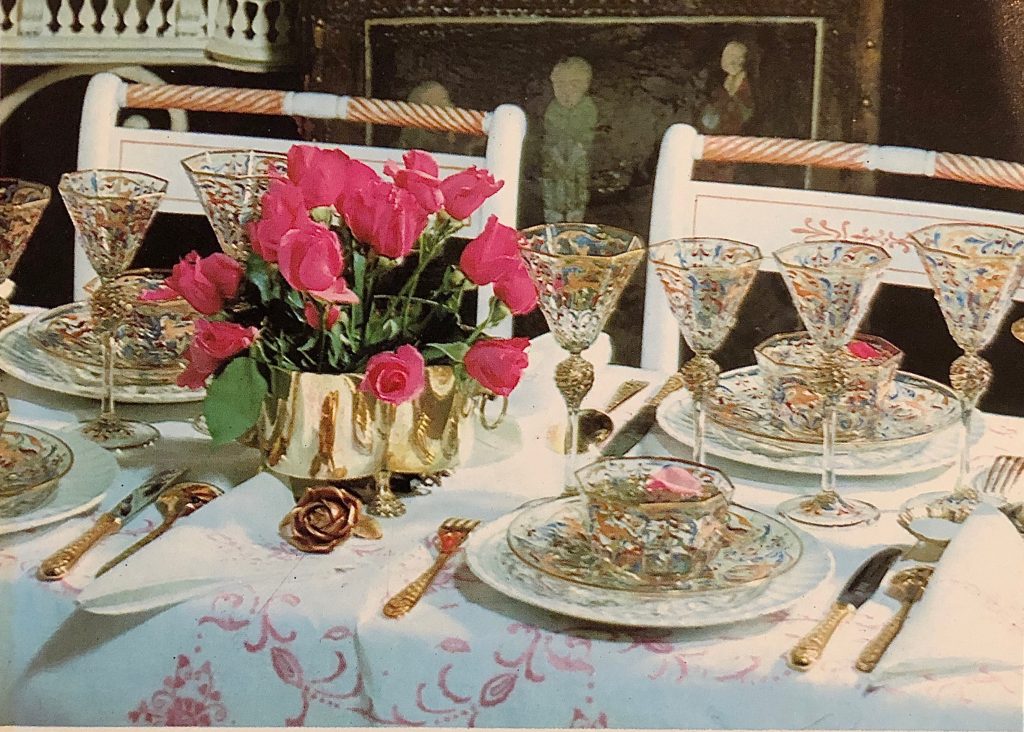
So what do you do when you’re presented with a finger bowl? Just dip the fingertips of one hand in and then dry on the napkin, then the other. You’re not having a wash, but you can touch your lips with the water if you feel they are in need – though if you are a woman wearing lipstick, I would avoid this as you don’t want to wipe your lipstick off on your host’s lovely napkins. That’s it.
Quick tip: If you are intending to use finger bowls at a dinner, a. invite me and b. float a flower in each bowl as you see above. Most people won’t have used a finger bowl before and may think you’re sending out a clear soup, the flower will help them realize this isn’t to consume.
When collecting finger bowls, you’ll notice they will all have a very similar shape. Smaller than a cereal bowl, finger bowls have high, gently sloping sides, (though there are some round versions). Often, they come in sets with an under-plate, though this isn’t always the case as sometimes the under-plate was the dessert plate. Finger bowls are generally crystal, glass or silver. Of course, as with everything that goes through fashions, there are straight sided finger bowls as well, but they are not common. If you use a finger bowl that is more bowl shaped, be sure to float that flower and use a cloth doily underneath as these bowls will definitely confuse even the most knowledgeable of dinner guests.
I’m sending good wishes to you and yours. Much love, Cheri
